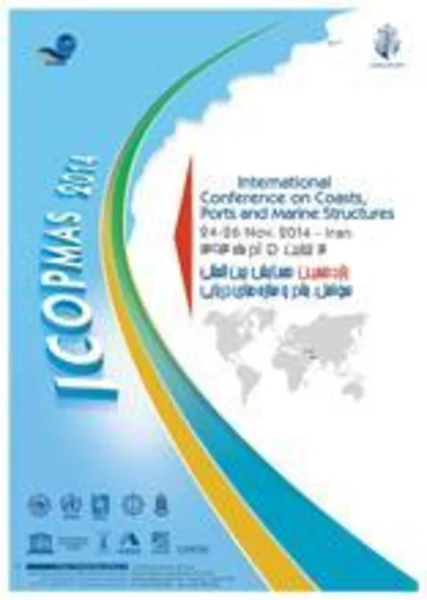-
oil spill clean up & survey and monitoring of beaches
جزئیات بیشتر مقاله- تاریخ ارائه: 1387/01/01
- تاریخ انتشار در تی پی بین: 1387/01/01
- تعداد بازدید: 885
- تعداد پرسش و پاسخ ها: 0
- شماره تماس دبیرخانه رویداد: -
oil spilled on water is seldom completely contained and recovered and some of it eventuall reaches the shoreline the fate and behavior of oil on shorelines is influenced by many factors, some of which relate to the oil is deposited on the shoreline, such as weather and waves. these factors include the type and amount of oil, the degree of weathering of the oil, both before it reaches the shoreline and while on the shoreline, the temperature, the state of the tide when the oil washes on shore, the type of beach substrate, i.e., it's material composition, the type and sensitivity of biota on the beach, and the steepness of the shore, the extent that an oil penetrates and spreads, its adhesiveness, and how much the oil mixes with the type of material on the shoreline and all important factors in terms of clean up.there are many types of shorelines, all of which are classified in terms of sensitivity of oil spills and ease of clean up. the types discussed here one: bedrocks, man-made solid structures, boulder beaches, pebble- cobble, mixed sandgravel beaches, sand beaches, sand tidal flats, mud tidal flats, marshes, peat and low-lying tundra,and mangrove .the primary objective of clean up operation is to minimize the effects of the stranded oil and accelerate the natural recovery of affected areas.obviously, a clean up technique should be safe and effective and not be so intusive as to cause more damage than the oil itself (fingas,2000)
حوزه های تحت پوشش رویداد
مقالات جدیدترین رویدادها
-
استفاده از تحلیل اهمیت-عملکرد در ارائه الگوی مدیریت خلاقیت سازمانی و ارائه راهکار جهت بهبود
-
بررسی تاثیر ارزش وجوه نقد مازاد بر ساختار سرمایه شرکت های پذیرفته شده در بورس اوراق بهادار تهران
-
بررسی تأثیر سطح افشای ریسک بر قرارداد بدهی شرکت های پذیرفته شده در بورس اوراق بهادار تهران
-
بررسی تأثیر رتبه بندی اعتباری مبتنی بر مدل امتیاز بازار نوظهور بر نقد شوندگی سهام با تأکید بر خصوصی سازی شرکت ها
-
تأثیر آمیخته بازاریابی پوشاک ایرانی بر تصویر ذهنی مشتری پوشاک ایرانی (هاکوپیان)
-
تداوم حضور عناصر معماری مذهبی از دیرباز تا کنون
-
تحلیل و مقایسه دو استراتژی بیمه سبد سرمایه (cppi ,obpi) به وسیله معیار عملکرد امگا
-
دولت رانتیر و بازتولید فساد اداری؛ مطالعه موردی: پهلوی دوم 1320-1357
-
بررسی اثر دکسترومتورفان بر شدت درد پس از عمل جراحی باز کیسه صفرا
-
biodiesel production from palm oil using calcined waste animal bone as catalyst
مقالات جدیدترین ژورنال ها
-
مدیریت و بررسی افسردگی دانش آموزان دختر مقطع متوسطه دوم در دروان کرونا در شهرستان دزفول
-
مدیریت و بررسی خرد سیاسی در اندیشه ی فردوسی در ادب ایران
-
واکاوی و مدیریت توصیفی قلمدان(جاکلیدی)ضریح در موزه آستان قدس رضوی
-
بررسی تاثیر خلاقیت، دانش و انگیزه کارکنان بر پیشنهادات نوآورانه کارکنان ( مورد مطالعه: هتل های 3 و 4 ستاره استان کرمان)
-
بررسی تاثیر کیفیت سیستم های اطلاعاتی بر تصمیم گیری موفق در شرکتهای تولیدی استان اصفهان (مورد مطالعه: مدیران شرکتهای تولیدی استان اصفهان)
-
بررسی اثر عوامل محیطی بر پراکنش گونه سیاه شور suaeda aegyptiaca
-
جبران خسارت محکومان بی گناه در حقوق ایران و آمریکا
-
ارزیابی آثار توسعه بر محیط زیست شهر مسجد سلیمان با کاربرد مدل تخریب
-
عناصر معماری پایدار در باغ سیف الدوله شهرستان ملایر
-
oil reservoir permeability estimation from well logging data using statistical methods (a case study: south pars oil reservoir)




سوال خود را در مورد این مقاله مطرح نمایید :